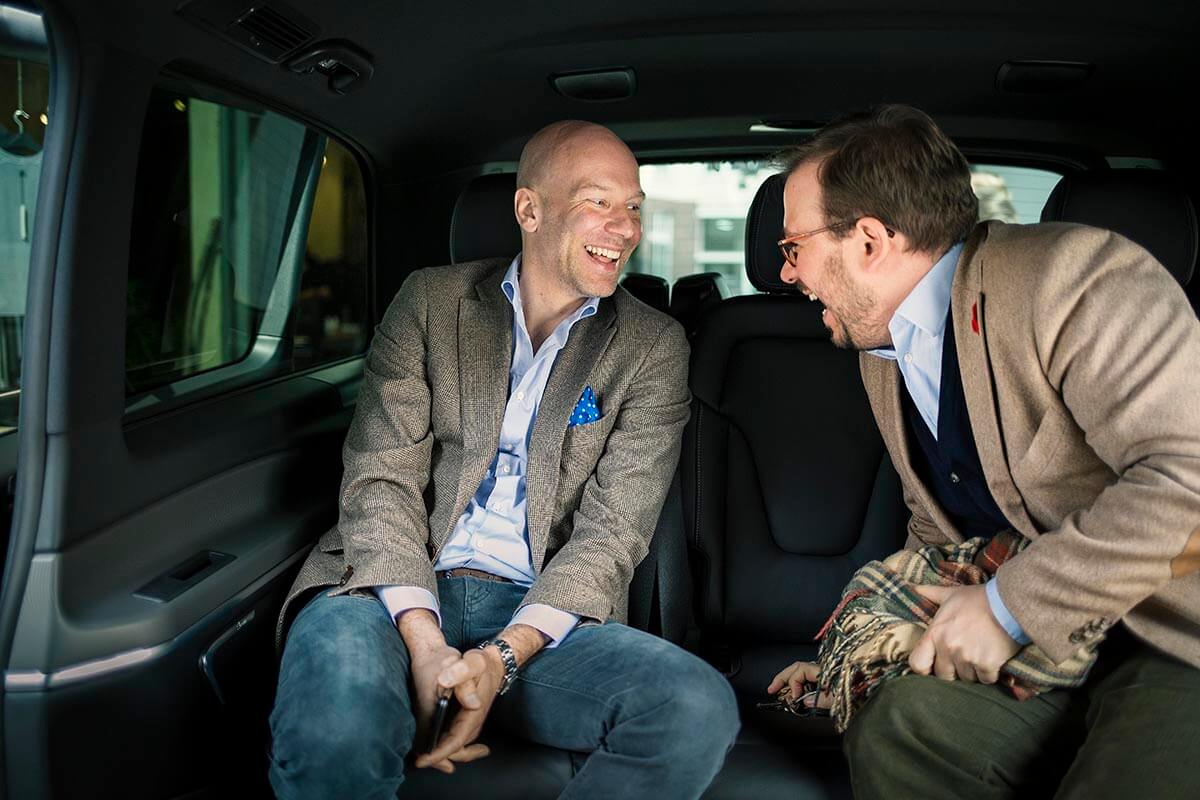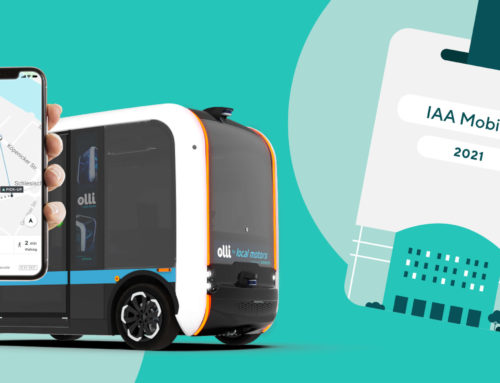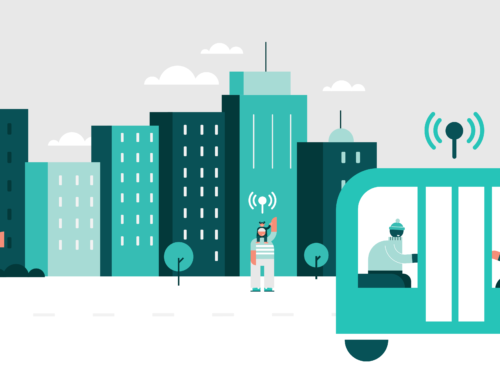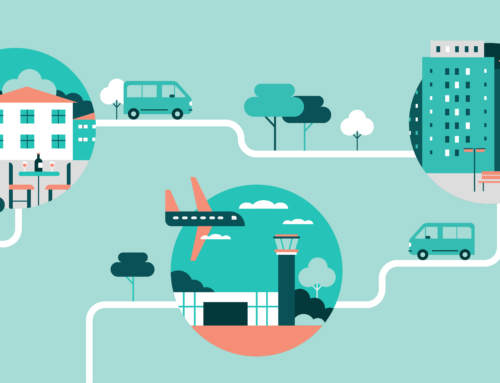I’m sure your daily life has also changed a lot since March, including a completely different mobility behaviour. We are on the road less and the journeys we take are different – less traffic, fewer fellow travellers, different means of transport. None of us ever imagined how much the world would be turned upside down, or that some of it already feels almost like a new routine.
There is no doubt that these times are more demanding than any before for many of us and not only bring uncertainty, but also many restrictions. Breaks with the past can be painful, but also represent fertile ground for new ideas. A personal example: 10 years ago, the volcanic eruption of Eyjafjallajökull on Iceland paralyzed travel in Europe. Affected by the restrictions, Maxim Nohroudi and I asked ourselves what the future of mobility could look like. Together we founded door2door to develop technology and services for sustainable, appealing mobility services.

Tom Kirschbaum and Maxim Nohroudi founded door2door in 2012
Public services in times of crisis
There is no question that the coronavirus pandemic represents a far greater suspension of normal life for all of us than the volcanic eruption in 2010. There are also considerable changes involved for transport. Some of them will disappear after a short time, but some will permanently change the world. I am convinced that more than ever it is up to us to decide how mobility will be shaped in the future. For me, there is no doubt about that people will remain mobile. Social interaction, whether private or professional, will continue to be an elementary component of our togetherness. In this context, public transport will always play a special, decisive role in whether the goal of public services – mobility for everyone – can be reconciled with the challenges that lie ahead, especially with the dynamic innovations and opportunities that digitalization brings. Our aspiration at door2door is to ensure this harmony. We want to continue to develop technology and services that combine the reliability of public services with the power of innovation for everyone. #DaSein (being there) – that’s what local public transport must promise and deliver, day after day, in both classic scheduled services and flexible forms like ridepooling.
The current situation presents many municipal enterprises with major economic challenges. We take this as an incentive to focus even more on the economic efficiency of on-demand transport. There is great potential in the harmonious interplay between scheduled and on-demand transport, which we would like to exploit with you. At the same time, I am firmly convinced that investments in future-oriented infrastructure are needed more than ever before so that we do not slow down in our common endeavour to champion sustainable, versatile mobility over private cars. The transport revolution may have been pushed into the background by the coronavirus. But along with climate change, it remains one of the most pressing issues of our time and will continue to occupy us long after the pandemic has lost its relevance in daily life.
From upheaval to new beginnings
The current turning point is a great opportunity to transform uncertainty into upheaval, and upheaval into new beginnings. It is right to invest in new lines, more frequent services and modern vehicles. It is also right to strengthen the infrastructure for cycling, the advantages of which are becoming even clearer now. But it is indispensable to invest in a digital infrastructure that can efficiently manage transport as a mobility platform and, most importantly, is able to close the gaps between private cars and scheduled services through ridepooling, i.e. intelligent on-demand transport. In many constellations, these services are more attractive and efficient than regular services. But especially in rural areas, it is also clear that they must be supported by public funds as part of the provision of public services. In short, the transport revolution and mobility must be worth something to us. All levels – EU, federal and state – are needed to foster the role of local public transport as the backbone of the transport revolution in our municipalities.
Remarkably, during the crisis, public transport was one of the very few sectors that maintained its services almost throughout. This was possible because the public interest in working local transport was so great. According to private sector criteria, transport companies would have effectively discontinued their services. And it will also be public transport that shapes the transport revolution, because here, too, public interests in its success are so important – provided the right foundations are laid now. We are also thinking about societal inclusiveness: Many people are dependent on public transport and find themselves without sufficient alternative mobility beyond private cars, especially right now. This includes not only elderly and sick people, but also people in wheelchairs or families who cannot afford their own car. For all of them, public transport is an existential guarantee for participating in public life and should therefore be equally available to everyone.
In our first edition of our Lab4Mobility webinar, I discussed the current Civity study “Transport turnaround: cancelled or postponed?” together with Stefan Weigele. One key point: In order to win back passengers after the lockdown and to be positioned for future scenarios, public transport needs a concerted strategy now. That is why we at door2door have developed innovative concepts and offers that will continue to make public transport safe, economical and accessible to all in the long term.

5-part Lab4Mobility series
In the coming weeks, you can learn more about our comprehensive offer in times of crisis. In addition, under the hashtag #DaSein you can find exciting contributions which look at the provision of public services during the pandemic and beyond. Let’s work together on public transport that can be there for everyone.



